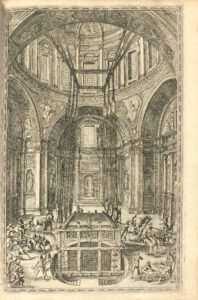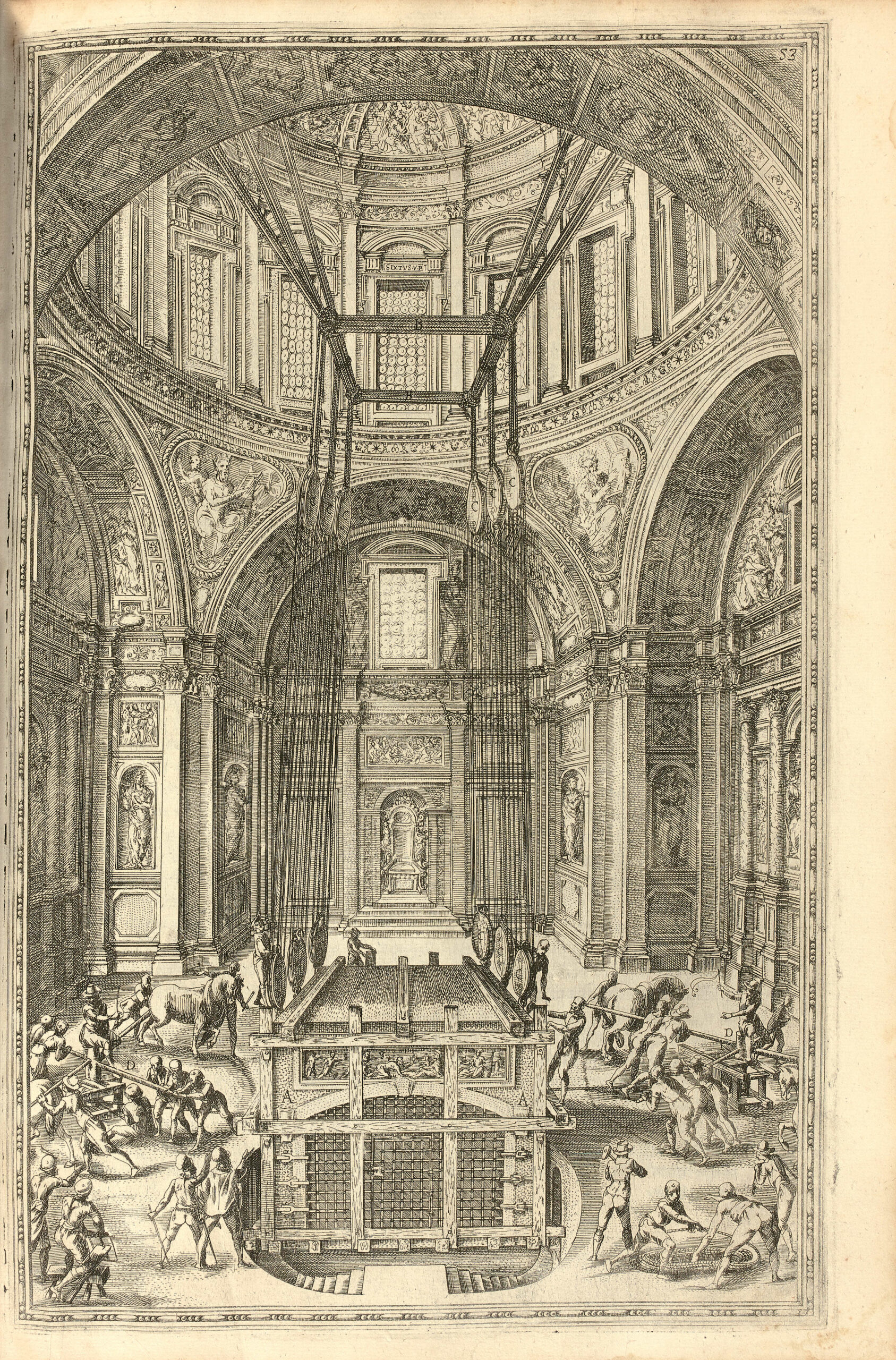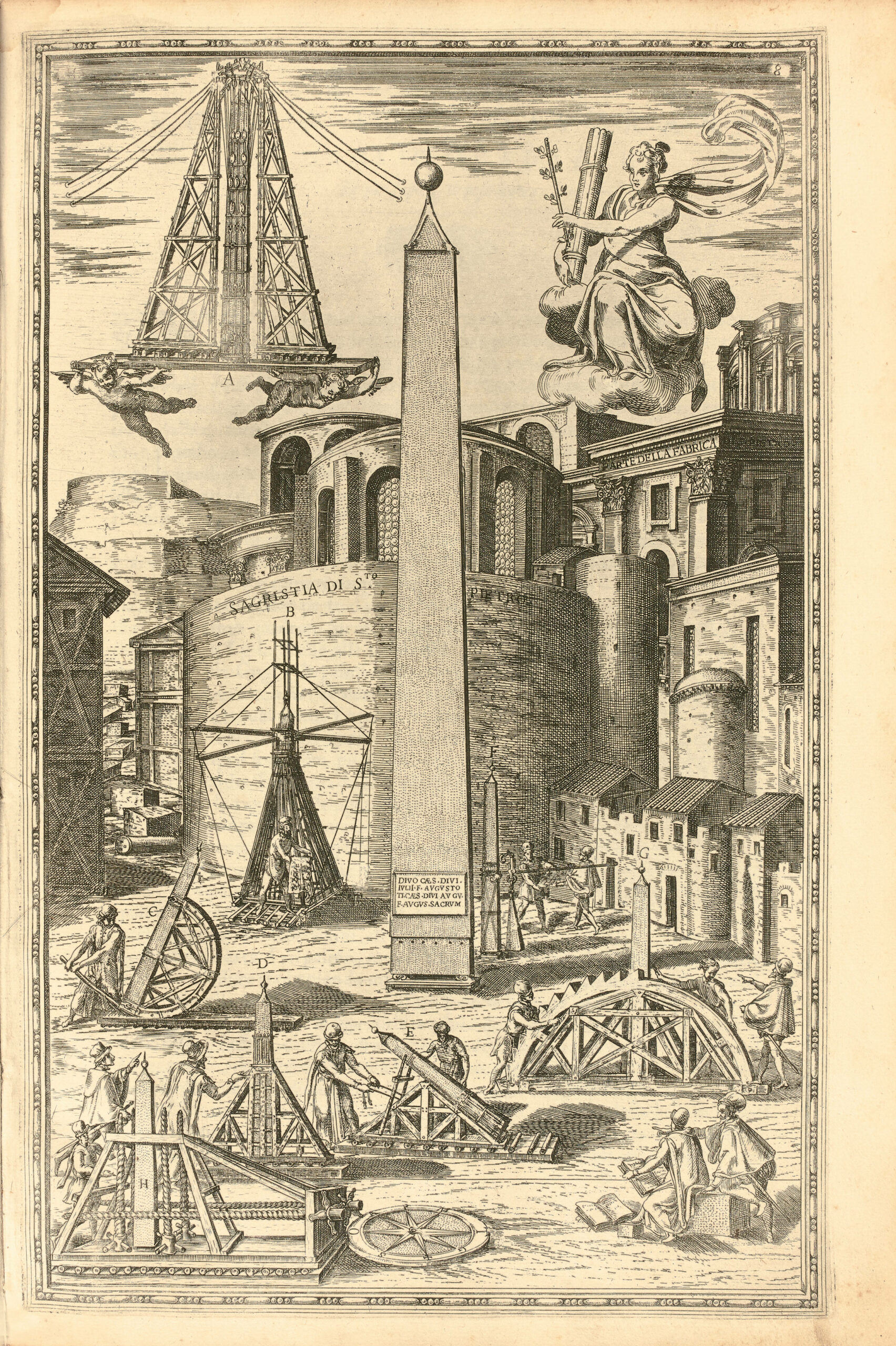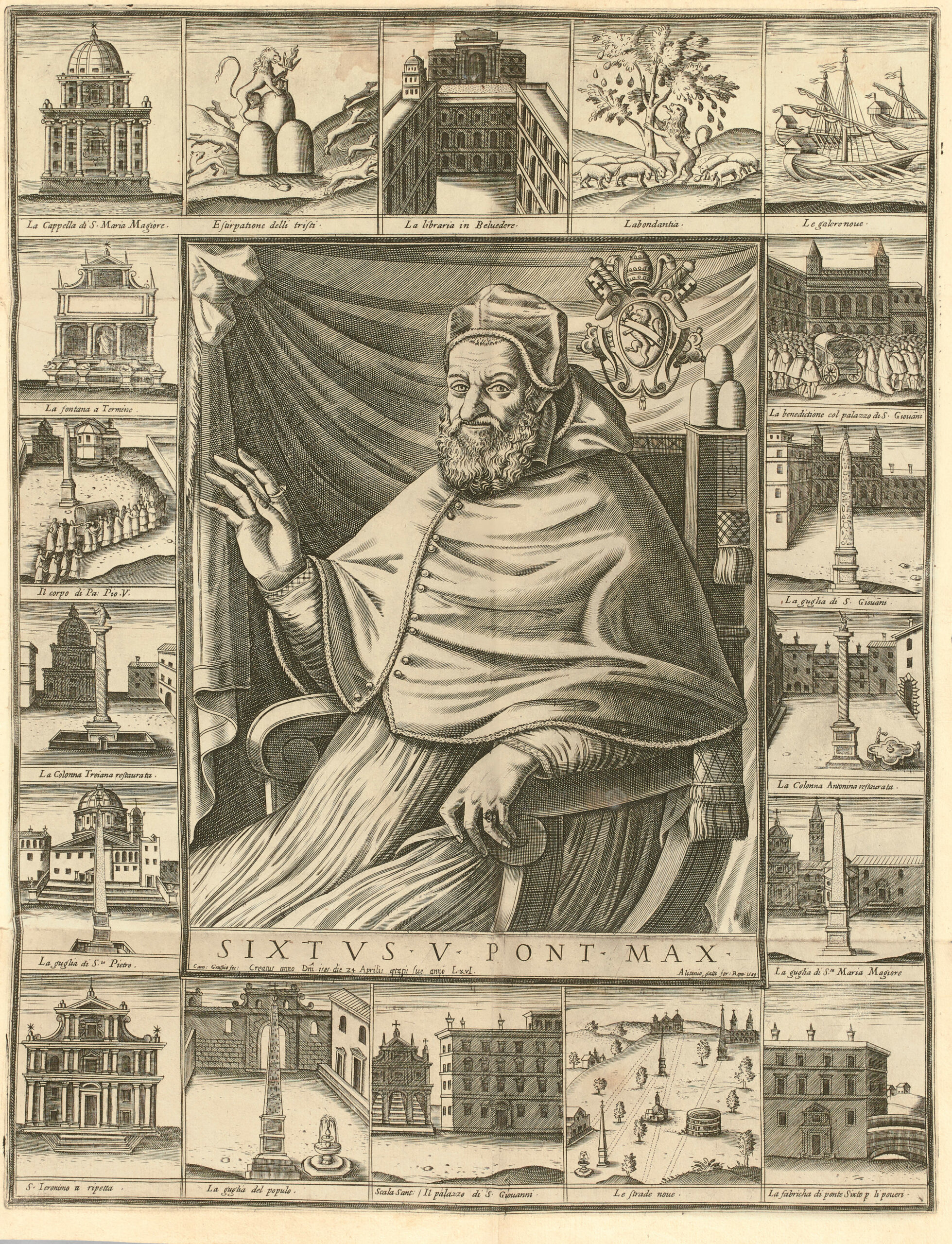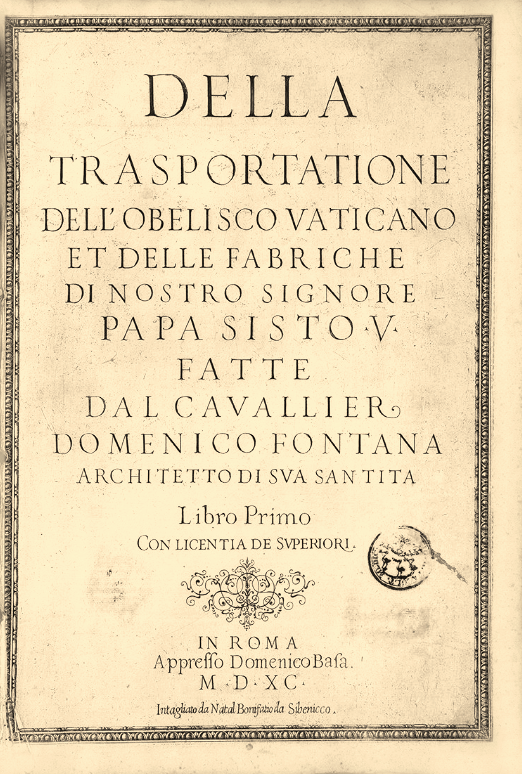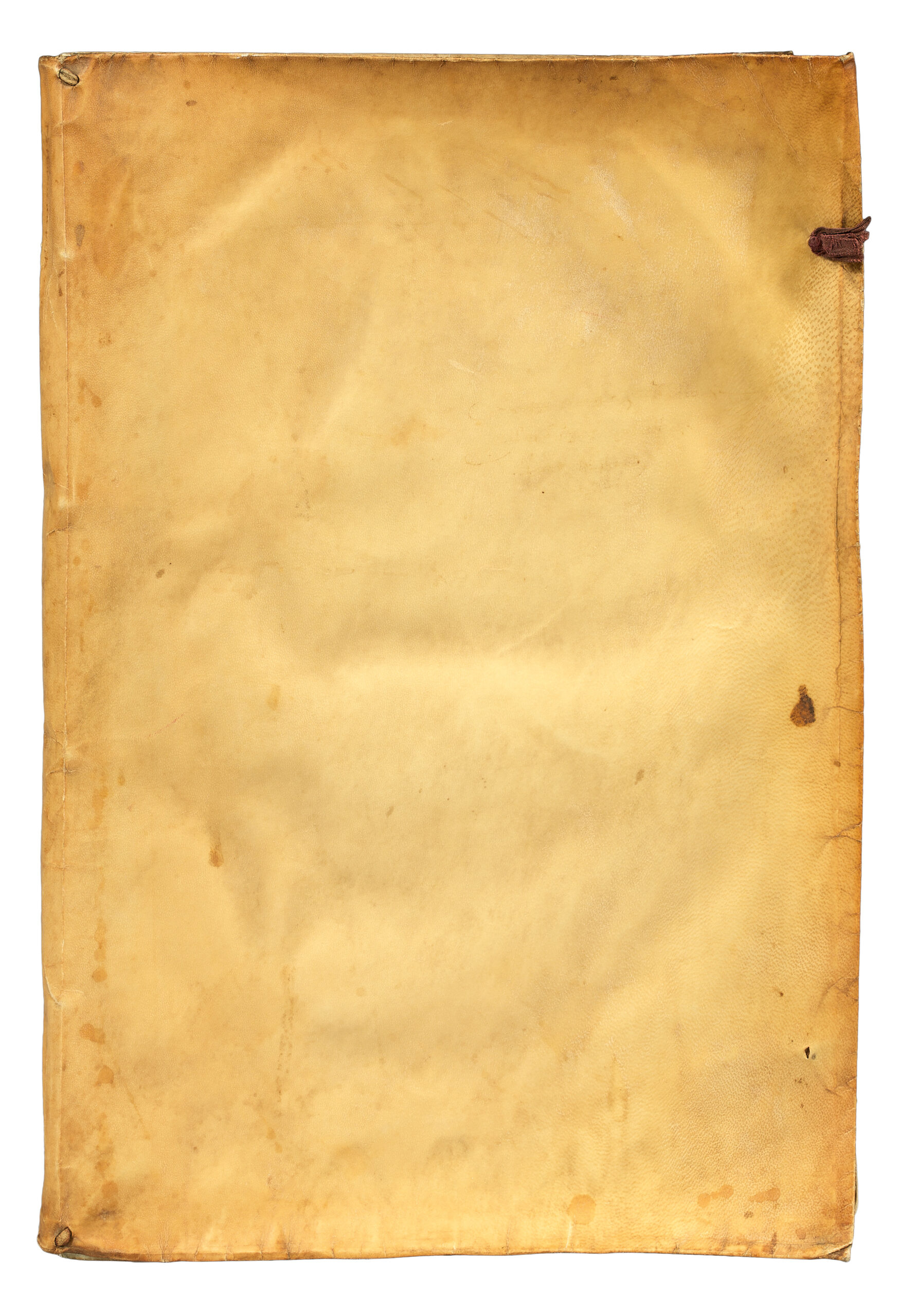Rome, Domenico Basa, 1590.
Folio, folded portrait-frontispiece, illustrated engraved title, 108 ll. (some numbered in duplicate and one lêf 66bis) including 36 engravings, (4) ll. (tables, errata and colophon), and 2 plates, one of which folding.
Full ivory vellum, flat spine. Contemporary binding.
407 x 272 mm.
First edition of the illustrated description of one of the most important events in sixteenth-century papal Rome.
Brunet I, 1329; Mortimer n°193; Fowler n°124; Dibner, Heralds of Science, n°174.
It is illustrated with 40 copper engravings by Natale Bonifacio (1537-1592) after drawings by Domenico Fontana, including a folded portrait-frontispiece of Pope Sixtus V, an engraved title with a portrait of Fontana in a richly architectural frame, 2 plates out of text in fine, one of which is folding, and 36 plates included in the pagination. 12 plates represent the moving of the obelisk, the others, Fontana’s works for Sixtus V: the Villa Montalto, the chapel of Santa Maria Maggiore, the erection in the apse of this chapel of an Augustinian obelisk, the description of the cathedral of San Giovanni, and various doors of Rome.
“The project consisted in placing the obelisk, which had been located flush with the apse of the new basilica, in the center of St. Peter’s Square. […] This work site was part of a series of major works undertaken in Rome by Pope Sixtus V (1521-1590) […] The transfer of the obelisk, mentioned above, had been judged unfêsible even by Michelangelo (1475-1564), who had been consulted on the subject by Paul III (1468-1549); the idê had therefore been abandoned. However, only four months after his accession, Sixtus V put the subject back on the agenda, appointing a commission, made up of four prelates, four cardinals and the senator of Rome, to organize the architectural competition. The project presented by Domenico Fontana (1543-1607) was chosen… […]. To carry out his mission, Fontana decided to lift the obelisk and place it horizontally on a sled to transport it to the center of St. Peter’s Square, where it was to be erected. But the apparent simplicity of the procedure should not make us forget that it is a monolith of red granite 25.36 meters high and weighing more than 700 tons! In order to achieve this, Fontana also had to design all the machinery necessary for such an undertaking […] The actual transfer, which required more than 900 men and 150 horses, took place in front of a crowd of spectators reduced to absolute silence by government edict. The operation was a success and Fontana was named a noble citizen of Rome by Sixtus V.
The architect published “Della trasportatione dell’obelisco vaticano” in 1590, of which a dozen plates illustrate the transfer of the obelisk itself, the rest of the work being devoted to other works that Sixtus V entrusted to him: Villa Montalto, residence on Mount Quirinal, chapel of Santa Maria Maggiore, cathedral of San Giovanni, etc. The close collaboration between Fontana and sixtus v was fruitful and the architect contributed grêtly to the ambitious project of the pope: rebuilding the eternal city. As Baron von Hübner would later point out, “to do all that Sixtus V did in five yêrs was to rêch the last limits of what was possible: to conceive, to mature these projects, in the midst of so many other occupations, was to cross them, it was to perform miracles“, miracles made possible by Domenico Fontana’s ingenuity (Elodie Desserle, Déplacer des montagnes avec Domenico Fontana).
“One of the most famous stories in engineering history” (Dibner).
“The plates are an important example in the development of architectural drawing” (Fowler).
A handsome copy preserved in a contemporary ivory vellum binding.
